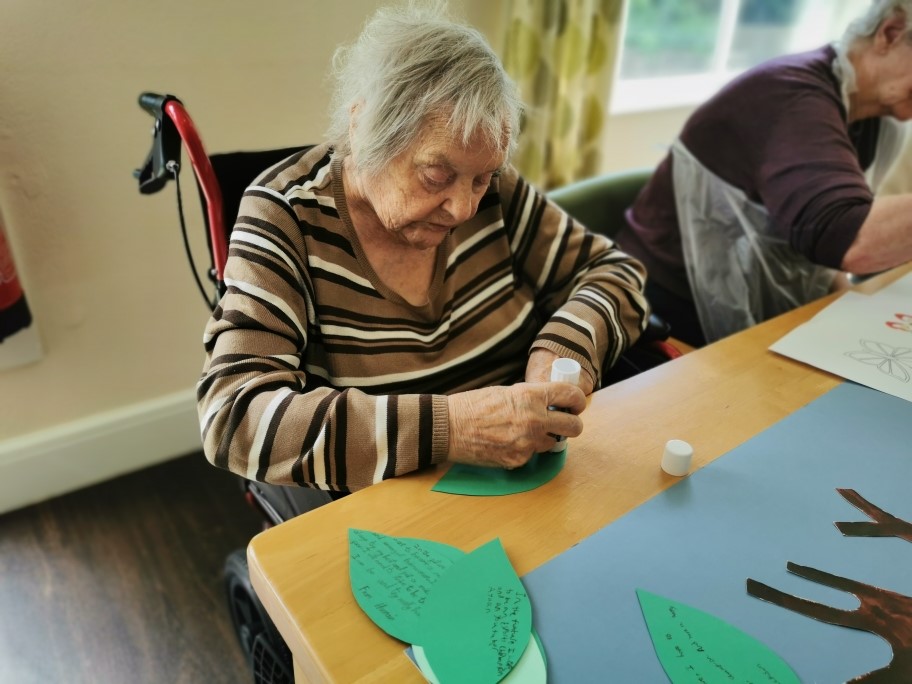Despite the challenges and pressures faced by care homes and schools during the pandemic, children and older people have been befriending each other in Bradford. Amy Lock and Linda Cowie from the Linking Network share stories of how these friendships are making a difference.
We learned to be creative and flexible, finding ways to build meaningful relationships and connections when we knew we wouldn’t be having face to face meet ups for a long time
There are untold benefits to fostering friendships across generations. Intergenerational linking is about bringing different generations of people together to share stories, develop understanding of each other and create meaningful relationships.
These friendships reduce the isolation felt by older people and empower children and young people to connect with their wider community.
Facilitating connections between young and old is logistically challenging at the best of times – let alone during lockdown when friendships are needed even more.
Connecting schools are care homes during COVID-19
Setting up intergenerational linking connections between schools, youth groups and care homes can lead to long-term, sustainable links and friendships. Especially when the older and younger people co-produce the activities that they want to do together.
Part of the National Care Home Friends and Neighbours Intergenerational Linking Project, The Linking Network in Bradford has an ambitious goal to link every school in the district with an older community.
It only took one conversation for us to get involved in the intergenerational linking project – we knew it’s such a brilliant idea
We know intergenerational linking can provide connections for people who otherwise might become socially isolated – such as care home residents. We started facilitating links before the pandemic, but COVID-19 affected care homes badly with visitors not being allowed for a long time. We realised our project could help people even through the toughest lockdown restrictions.
How we did it
Teachers and care home staff initially designed how the children and residents would connect – many choosing to exchange letters, cards and photos to introduce themselves.
We learned to be creative and flexible, finding ways to build meaningful relationships and connections when we knew we wouldn’t be having face to face meet ups for a long time. We worked hard to put no extra burden on teachers or care staff during an already incredibly pressured time.

Making friends through a shared interest
One friendship was sparked by a common interest in wrestling – between Mike, who lives in a care home, and a young school boy. As the children and older people got to know each other through exchanging cards, Mike sent a photo of himself holding up a board that said he used to be a wrestler. As the children looked at the photos, the boy took a shine to Mike because he also really likes wrestling.
While his school ran remotely, the schoolboy – supported by his teacher – drew pictures of wrestling for Mike. Inspired by these drawings, Mike sent the school photos of himself in his wrestling gear when he was younger. The pupil was excited to learn that there’s an ex-wrestler living in his local community and they’re still keeping in touch. It’s a touching example of a meaningful intergenerational connection being made despite Mike and the schoolboy not meeting in person.
We heard from teachers that, after a while, the children started talking about older people in their lessons. Children began asking what their new, older friends would like and think when they were learning new things at school. Even virtually, the children were getting a lot out of the contact with older people and expanding their understanding of others in their community.
What’s next?
Heading into the future, we want these links and friendships to continue and to move towards face to face meetings.
After seeing the value in this project, teachers are signing up for a second year. The support they get from us and The Linking Network helps them feel able to do this even in times of great pressure on schools.
We’ve learned that the facilitator role is critical in making intergenerational linking work. The facilitator keeps connections alive while taking on board the wants and needs of everyone involved.
We’re sharing our experience and best practice with Bradford’s 29 local authorities – moving towards our goal of linking every school in Bradford with an older community.
As lockdown restrictions eased, our project lead Amy has been allowed into some of the care homes to meet the residents and staff who are taking part. Chatting to the older people they told us, “We love it when the children send us messages. They know our names and call us by our names.”
It’s clear how much these connections mean to them and how this project has made a meaningful local impact during a time which could have otherwise been isolating for older people.
Find out more
The Linking Network is one of 11 local organisations, across England, who are facilitating connections between older and younger people through the Care Home Friends and Neighbours Intergenerational Linking Project. You read more about the other ten organisations on the project webpage.

